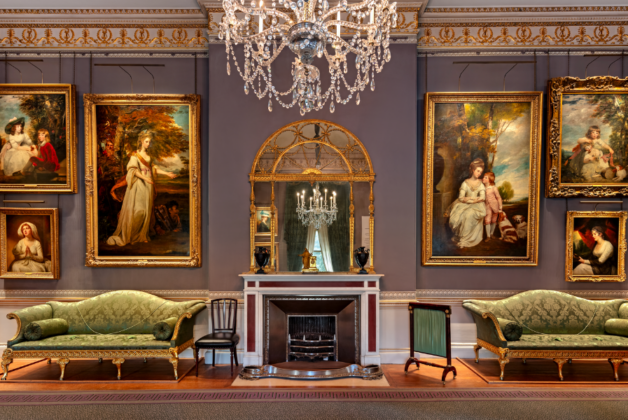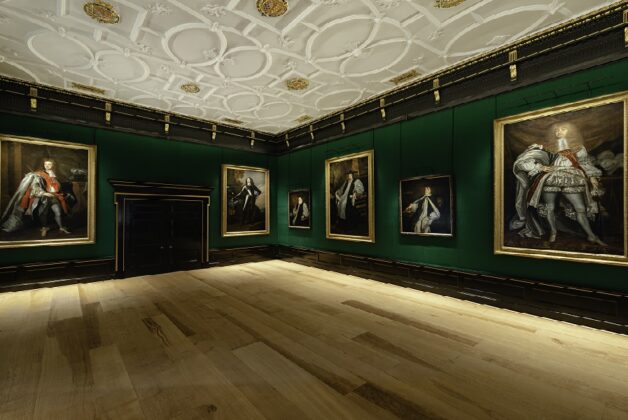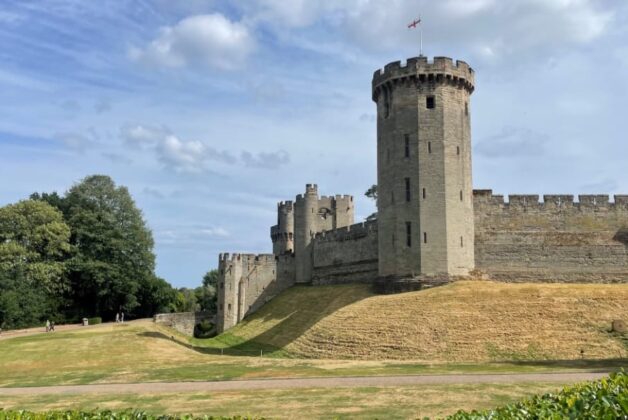TM Lighting explains the intricate art of sculpting with light to accentuate an artwork’s shape, material, and the artist’s vision.
‘When you look at a sculpture in a historic house or museum, you’re not just seeing a static object; you’re experiencing the interplay of shape, texture and light’, says Andrew Molyneux, co-founding director of TM Lighting. A leading art lighting specialist, TM Lighting has worked with galleries, museums, interior designers and hospitality venues for over a decade to illuminate their collections with high-quality, efficient and sustainable lighting, including numerous sculptural artworks.
Behind every illuminated three-dimensional work lies a meticulous process requiring the right lighting, whether it be for lighting sculptures of classical elegance or contemporary complexity.
The Balancing and Direction of Light
When lighting sculpture it is as important to consider the shadow as much as, or even more than, the light. In classical figurative sculpture, we know the form and how it should look. To achieve the perfect balance of light and shade in abstract contemporary sculpture, however, it is often useful to have insight from the gallerist or artist to ensure the work is displayed as the artist intended.
Having the flexibility to situate spotlights in any position is key to successfully lighting a sculpture. Harry Triggs, TM Lighting’s co-founding director, notes that for museums and heritage sites, ‘a track system is the best way of providing the flexibility to find the ideal position for lighting, which ensures that each sculpture is showcased in its best light’. If this isn’t feasible due to practical constraints, TM Lighting works with the client to create a solution that works with the space available to cast the right light.
On Reflection
Molyneux warns that the management of reflections is key when working with highly reflective surfaces or rounded forms. ‘Overlighting’ from multiple sources can result in too many reflections obscuring the artwork. He says, ‘Light will always reflect from the vertices of a rounded shape so the solution is to minimise the number of reflections, or in some instances, the reflection could be used to enhance the sculptural piece.’
Paintings on canvas that employ deep impasto, particularly if utilising a high-shine pigment, present a sculptural problem for art lighting specialists. ‘The physicality of heavily layered paint in works by artists such as Frank Auerbach and Jason Martin adds another layer of complexity for lighting’, says Triggs. ‘The solution must combine precise light positioning, the right filter and correct intensity to interpret the work as intended’.
Minimising Glare and Maximising Impact
Minimising glare and distractions from light sources and reflections is paramount. Whether through using indirect diffuse lighting or strategic light placement to exploit main viewing angles, the goal is to accentuate the sculpture’s form while minimising ‘visual noise’. Molyneux advises that lighting a sculpture may require placing a ceiling-mounted spotlight further into the room to achieve the ideal angle. A more exposed light fixture must utilise accessories that obscure the onlooker’s view into the light source. This control of glare therefore minimises distraction from the work.
Unconventional approaches to lighting sculpture may also be used for greater impact. When TM Lighting lit Theatre Royal Drury Lane, Molyneux worked closely with its owner, Lord Andrew Lloyd Webber and the design practice BDP to illuminate sculptures of past playwrights with ‘dramatic’ lighting, to cast a shadow on the wall behind, as though they were on stage.

The Crucial Role of Colour Temperature
The right colour temperature is key when illuminating sculptures. A cooler temperature is more sympathetic to marble and stone sculpture, and avoiding a warmer temperature is advisable for marble to stop it from appearing discoloured. Warmer tones can work better with bronze sculpture as they enhance the warmth of the brass and copper throughout the patina, and accentuate underlying hues, such as green in copper-based sculptures. Molyneux says that ‘museum and gallery settings would normally require a neutral colour temperature of around 3000 Kelvin to preserve the integrity of the artwork’.
Resilience and Sensitivity to Light
Materials play a significant role in determining lighting requirements. While stone, glass, and bronze are generally resilient to light, delicate materials such as fabrics, ivory, and leather require gentle illumination. In museums, ‘lux’ levels must always be monitored and controlled, whether the limit is 300 lux for hardier materials, 200 lux for ivory and leather or 50 lux for fabrics. In a recently completed example, Hardwick Hall in Derbyshire, TM Lighting installed 30 of its Zero60 spotlights to illuminate 230 feet of tapestries to a maximum lux of 40. TM Lighting’s co-directors are clear that ‘LED lighting emerges as the least damaging option, and this gives it both versatility and sustainability’.
Ultimately, lighting sculpture requires patience, experimentation, and a keen eye for detail. The process is one of trial and modification, whether in a purpose-built institutional setting with adjustable track systems or a historic site where each piece must be carefully lit with versatile lighting solutions. Yet, through this process, a truly well-lit sculpture has the power to transform a space and the viewer’s experience of the artwork.





